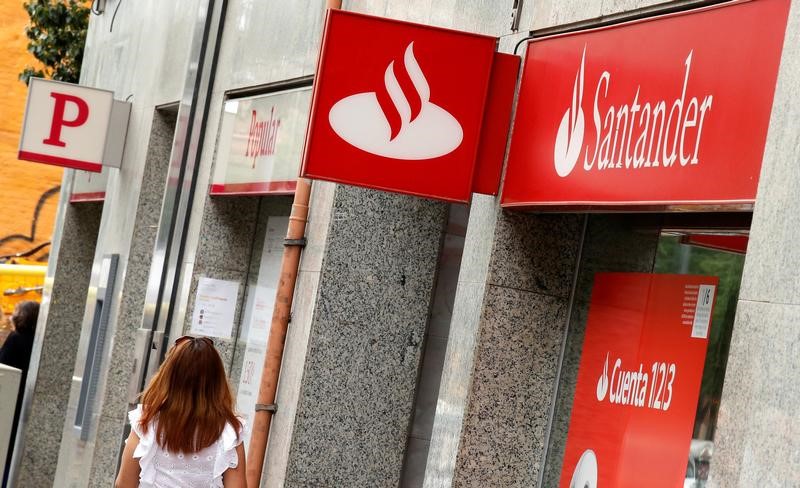By Geoffrey Smith
Investing.com -- Banco Santander (MC:SAN) stock rose 3.5% on Wednesday after showing that it is – despite all the evidence to the contrary - possible to be a European bank and still turn a decent profit.
The bank had a banner year in Brazil and Mexico, defying the largely negative publicity that dogged new populist governments (left-wing in the latter, right-wing in the former). It also had a good year in the U.S., where its consumer financing business profited from the sustained strength in consumer spending.
At first glance, the figures appear to be a resounding vindication of the bank’s strategy of regional diversification, which it says is the best way to lower its overall risk profile: the bank generated a record amount of capital through retained earnings, enough to allow another modest increase in the dividend.
Ana Botin, the group’s executive chair, said the bank’s common equity tier 1 ratio – a key measure of financial strength – will be at the top end of its 11%-12% target range by the end of next year.
At home in Spain, where growth is admittedly slowing, the bank has cemented its position by integrating Banco Popular, while its digital offerings continue to pick up market share quietly in the Netherlands and Germany.
So why is Santander (MC:SAN) stock so unloved? A price-earnings ratio of 9.7, according to data compiled by Investing.com, is not only below the broader market, but below the average for European banks, which is a pretty low bar already.
The same discount exists on a price-to-book ratio: the market values Santander’s assets at 66c cents on the euro, less than the 88c sector – even though the bank’s underlying return on equity is (by regional standards) a handsome 11.8%. Dividends, too, are edging up, a sign of what Botin called the management’s confidence in further improvement – the bank forecasts a “high single-digit growth” in underlying profit every year through 2022.
But Santander (MC:SAN) shares have fallen by 35% in the last two years and are still not meaningfully above their 2012 low, posted in the heat of Spain’s bailout crisis.
A skeptic would argue that the dependence on Mexico and Brazil is already starting to look like a potential liability – credit booms are a common feature of the early years of populist governments, but rarely end well. A cynic would make the same argument for its U.S. business, where it is getting into the car loans business at the end of a cycle that common wisdom says is on its last legs.
If one or more of those businesses turns down at the same time, the CET1 ratio could quickly return to more worrying levels.
Additionally, the sustained underperformance of its U.K. business – where profits have fallen for the last three years and where it took a 1.5 billion hit against goodwill last year – is now a seemingly permanent drag on returns, one that is already testing the patience of shareholders.
After today's numbers, it's hard to deny that regional diversification has served Santander (MC:SAN) well. The problem is, it's a strategy that can never satisfy all of the people all of the time.
